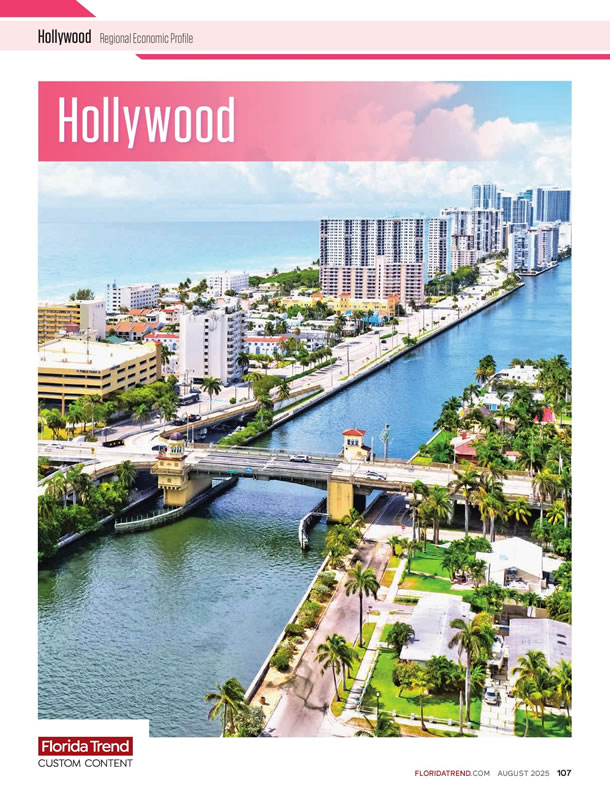Fifteen years later, Saxon, 53, is president and CEO of Bob Saxon Associates Inc., a global yacht-management company with 30 full-time employees, 400 independent crew members under contract and $4 million in annual revenues. From offices in Fort Lauderdale and Paris, Saxon supplies crews, troubleshooting and every imaginable service for boat owners who never have to wonder whether they can afford their whims. Does a guest aboard the Sacajawea have an urge for a 1981 Chateau Margaux in the middle of the Mediterranean? One of Saxon's employees will make sure a bottle is waiting at the nearest port. Perhaps the Lady K.K. needs engine repair on a remote Greek island. Saxon's fleet manager will find the nearest boatyard and make the arrangements.
Saxon is just one among a crew of Fort Lauderdale entrepreneurs who have made mini-fortunes off mega-yachts -- huge, opulent boats that use the city as a stopover between summers in New England and winters in the Caribbean or the Mediterranean. Wealth dripping off the boats can trickle down even to crew members, some of whom have been tapped by yacht owners for positions in their companies. "If you hang around wealthy people, good things tend to happen to you," says Saxon.
There are only 5,000 so-called megayachts -- boats at least 80 feet long -- in the world, but their scale makes each its own micro-economy. A 200-foot floating mansion can easily cost $40 million, with operating expenses amounting to about 10% of the purchase price each year. A 200-foot yacht might have a pair of 4,000-horsepower engines, and fuel tanks that hold 60,000 gallons of diesel. Fill 'er up? That will cost $96,000. An exterior paint job can easily cost $500,000. Then there's dock space, which can range from $400 a day for a 100-footer to $1,500 a day for a 400-footer. And the boats must be stocked with amenities, from artwork to fresh flowers to fine wines.
A niche within a niche, the megayacht industry begins with boat brokers like Merle Wood, who jaws on the phone with princes and actors from his office overlooking Fort Lauderdale's Las Olas Boulevard. Twenty-five years ago, Wood took a hiatus from the University of Florida's business school to broker yachts for a couple of years. Today, earning 5% to 10% commissions on boats that cost millions, he's glad he skipped the MBA. "I thought it would be a great way to meet rich, successful people for future contacts, and it was," he says.
Wood's brokerage is one of only a few in the world that specialize in megayachts. His annual sales volume: $500 million. Because a custom-made yacht can take four years to design and build, most of Wood's business is in used boats. The highly social work has Wood and his wife jetting around the world from Monaco to Mexico to spend time on clients' yachts or in their ports-of-call. "There's not a single megayacht floating anywhere in the world that's worth knowing about that I haven't been on," brags Wood. "We know more than anybody else about what's out there." Some megayacht entrepreneurs, like Wood, have come to enjoy the same lifestyle as their clients. Others, like Saxon, continue to live a middle-class, Fort Lauderdale existence -- though he long ago traded his aging Mustang for a convertible Jaguar. When Saxon vacations, he gets as far away from yachts as possible: Desert-hiking or mountain-climbing. Wood relaxes on clients' boats.
Most of the megayachts don't spend long periods docked in Fort Lauderdale. "What do you expect these owners to do, shop at Sawgrass Mills when they can be in the Bahamas?" asks Wood. But a few are regulars, such as Jim and Jan Moran's twin megas. Both named Gallant Lady, the boats are 160 and 167 feet long and held in the name of JM Family Enterprises. The Morans use the boats, along with their fleet of corporate planes, for schmoozing and charity events.
Exotic playgrounds
Saxon's tier of the industry -- yacht management -- is just what it sounds like: Those wealthy enough to own a megayacht can afford to have someone else hire the crew, buy supplies and arrange for dockage, repairs and maintenance. Some requests are considerably more exotic: In addition to maritime emergencies that have required Saxon to helicopter engine parts to clients' boats, he once had to fly a case of Macadamia nuts first-class from south Florida to Aruba for a client with a craving.
Typically, the owner of a megayacht spends seven to eight weeks a year on his boat. Some defray operating expenses by chartering the boats, providing more work for yacht managers like Saxon, who hire them out for fees upward of $45,000 a week plus expenses. Being responsible for someone else's megayacht can be a high-stress business. A small but notorious group of wild charter guests, including one U.S. rap star, is banned because of boat-trashing. Sometimes it's the crew that causes a problem. More than once, the wife or girlfriend of a client has taken off with the yacht's captain. "When you're dabbling with this kind of money in these kinds of playgrounds," Saxon says, "you see some pretty interesting things."
Further down the megayacht hierarchy are the crew members who staff the boats. The work has its share of demands: Crew members typically must rise before the guests and go to bed after them; their charges might want the on-board hot tubs heated at dawn or might want to stay onshore partying well into the wee hours. But a steward's lot can be rewarding: While salaries sound modest -- $19,000 to $30,000, depending on the size of the boat -- the job includes all living expenses onboard, from a cabin to the same lavish meals enjoyed by guests. "It's a glamorous job," says Saxon. "You see the world and you rub elbows with the most famous people in the world."
In between the crew and the yacht managers and brokers is a raft of other businesspeople -- many arrayed along Fort Lauderdale's 17th Street Causeway -- who serve the megayachts. At Bluewater Books & Charts, John Mann and his wife, Vivien Godfrey, supply everything from British Admiralty Charts to slick coffee table books to cookbooks and guides on entertaining; Bluewater's shelves feature no less than 10 books on the art of napkin folding. Then there's Smallwood's Yachtwear, where owner Helen Smallwood started out stocking snappy white crew uniforms and now has branched out into colorful crew daywear, monogrammed stationery, cups, napkins and other megayacht must-haves. Also on the causeway: Maritime lawyers, yacht-documentation specialists, yacht interior designers and crew-training schools that offer courses from firefighting to wine-corking.
Even the 17th Street Publix caters to the big boats: The store carries more than 500 wines and may be the only Publix in the state where customers can grab a $200 bottle of Taittinger champagne. Locals know not to get in the checkout line behind young people dressed all in white: They're often crew members spending thousands on groceries for a megayacht.
Dockspace shrinking
At the heart of the industry are the marinas, where the boats dock for fees between $1.50 and $3.50 per foot per day, and the boatyards, where mega-yachts might stop for a paint job, barnacle-scraping or engine repair. Demand for those services is climbing even as high-rise condos displace marinas, shrinking the space available for dockage and repair. "Every year, these boats are getting bigger and bigger and business gets better and better," says Scott Miser, director of yacht services at MarineMax boatyard. "But every year, you see fewer and fewer boatyards and more and more condos. Waterfront property is diminishing rapidly."
Three years ago, the Marine Industries Association of South Florida, working with the Broward Alliance and the University of Florida, commissioned a study on the economic impact of megayachts. It found that each of the 900 yachts that pass through every year spends an average of $236,000 at local boatyards alone. The study reported megayachts have a direct impact in the region of approximately $300 million a year -- counting only the boatyard, brokerage and charter businesses. Other East Coast cities, including Savannah, Ga., and Portsmouth, Va., have made moves to steal some of the megayacht business from Fort Lauderdale. The association is at work on a marine master plan for the region to try to create more space for the big boats and is lobbying for dock space at Port Everglades.
Meanwhile, as the rich get richer, their big boats get bigger, according to ShowBoats International, the magazine of megayachting that's published in Fort Lauderdale. In his annual new-construction edition, Editor in Chief Jim Gilbert reported this spring that megayacht construction is up 30% this year over 2000, with 428 boats on order. Construction of the largest yachts -- those longer than 150 feet -- is up 55%, with 62 on order.
The people who own and charter boats this size are so wealthy that the industry is generally untouched by the vagaries of the world economy, Gilbert says. A simple fact allows those who earn a living off the yachts to get richer themselves, says broker Wood: "There's always a rich person out there who wants a bigger boat."
Costs: If You Have to Ask ...
The routine annual costs of running a mega-yacht are about $7,000 per foot of length. That's $875,000 a year for a 125-footer. And that's not including major mechanical overhauls every three years that, depending on the yacht, can cost hundreds of thousands of dollars. Nor does it include maintenance such as paint jobs, which are needed every three to four years and can easily cost $500,000.
A Week on a Megayacht: The Tab
Here's how much it costs to charter a 125-foot Broward motor yacht with five guest staterooms from Fort Lauderdale to Nassau, Bahamas, from Friday noon to the following Friday noon, estimating for 10 guests and five crew members, including a captain, engineer and chef. Click here to view chart.












